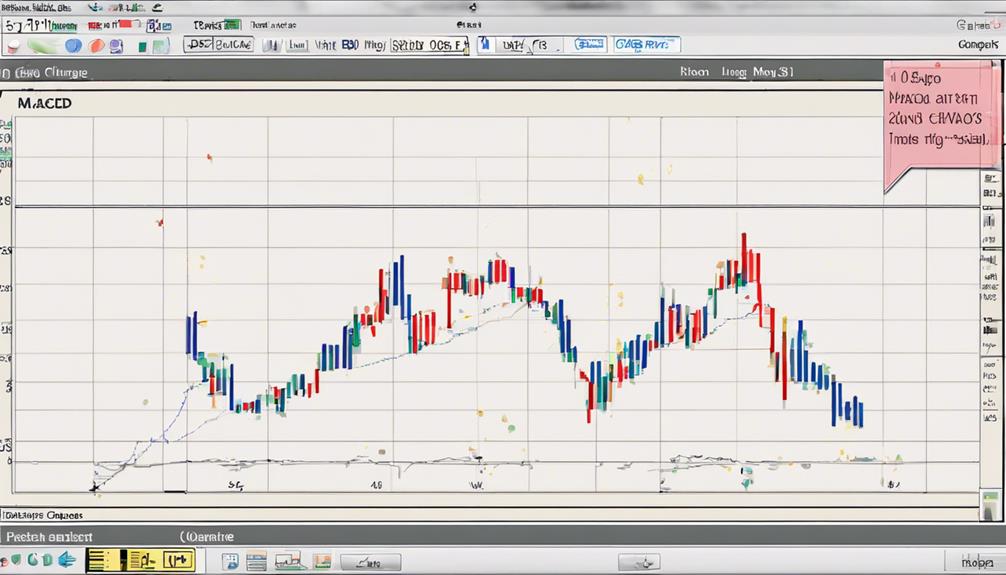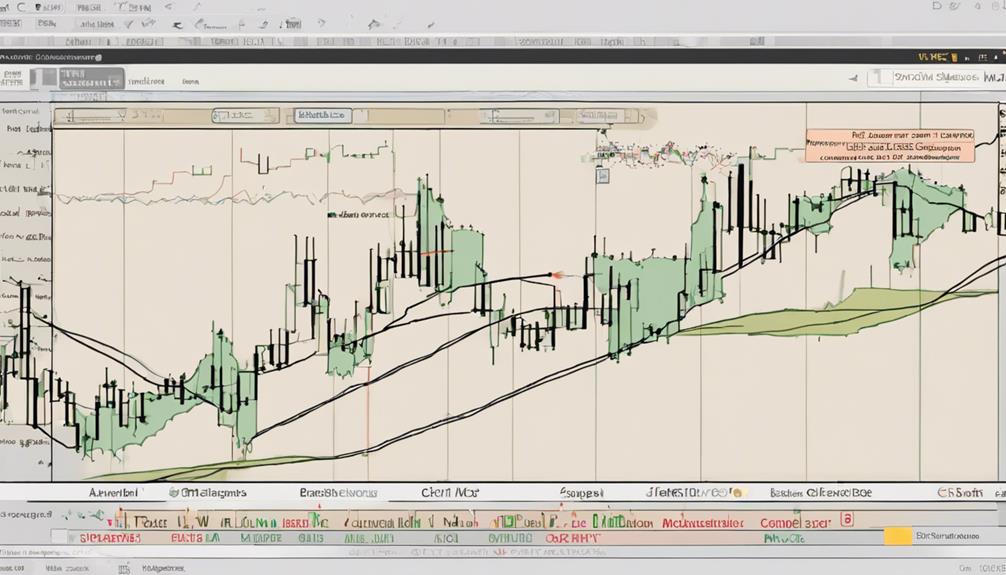You may not be aware that mastering the MACD Indicator requires more than just basic knowledge. Understanding Pro's top 3 tips can significantly elevate your trading game.
Starting with the MACD crossover method sets a strong foundation, but there's more to explore. Stay tuned to uncover the nuanced strategies that can help you navigate the MACD Indicator with finesse.
Optimal MACD Settings for Precision
When aiming for precision in your trading decisions, selecting the optimal MACD settings, such as the commonly used 12, 26, and 9 periods for EMA calculations, is crucial. These settings influence the MACD line, which is derived from the difference between two moving averages.
The signal line, often a 9-period EMA of the MACD line, aids in generating trading signals. An intersection where the MACD line crosses above the signal line can indicate a bullish signal, suggesting potential entry points. Traders often utilize these technical strategies to capitalize on price action with lower volatility.
Experimenting with different settings can enhance your understanding of how MACD operates, empowering you to make more informed trading decisions.
Utilizing MACD in Trend Identification

To effectively identify trends, utilizing the MACD indicator provides traders with valuable insights into market momentum and potential price movements. Here are some key ways to make the most of the MACD for trend identification:
- Compare short-term and long-term moving averages to gauge trend strength.
- Look for the MACD line crossing above the signal line for potential uptrend signals.
- Use MACD to confirm the direction of a trend, aiding in decision-making.
- Watch out for divergence between price and MACD, as it can signal impending trend changes.
Enhancing MACD Signals With Complementary Indicators

Enhancing MACD signals with complementary indicators offers traders a strategic advantage by providing additional layers of analysis to confirm trends and potential market movements.
Combining MACD with RSI helps identify overbought or oversold conditions, improving signal accuracy. Adding Bollinger Bands to MACD analysis aids in recognizing volatility and potential price breakouts, enhancing decision-making.
Integrating MACD with Fibonacci retracement levels refines entry and exit points in trading strategies, increasing precision. Pairing MACD with Stochastic Oscillator assists in spotting possible trend reversals and confirming market momentum shifts promptly.
Using MACD alongside Volume indicators offers insights into the strength of price movements and possible reversals, leading to well-informed trading decisions. By leveraging these complementary indicators with MACD, traders can better navigate market dynamics and make more informed trading choices.
What Are the Key Tips for Navigating the MACD Indicator for Beginners?
When using the MACD indicator, beginners should start by understanding the basics of how it works. Learning to interpret the signal line and histogram, as well as identifying bullish and bearish crossovers, are essential for successful trading. A beginner’s guide MACD indicator can provide valuable insights for navigating this powerful tool.
Frequently Asked Questions
What Is the Best Strategy for Macd?
The best strategy for MACD is the crossover method. It signals buying and selling opportunities when the MACD line crosses the signal line. This approach is popular for its simplicity and effectiveness in identifying trend reversals.
What Are the 3 Components of MACD Indicator?
The MACD indicator comprises the MACD line, signal line, and histogram. It calculates trend strength and potential buy/sell signals. Subtracting the 26-day EMA from the 12-day EMA forms the MACD line, with the signal line being a 9-day EMA of it.
How Can I Make My MACD More Accurate?
To make your MACD more accurate, adjust settings for specific market conditions, experiment with different EMAs, and combine with complementary indicators like RSI. Backtest regularly for optimization. Stay informed on market trends for enhanced accuracy.
What Is the MACD Triple Strategy?
To understand the MACD Triple Strategy, analyze MACD signals on daily, 4-hour, and 1-hour charts for trade confirmation. Aligning signals across these timeframes enhances signal accuracy, filters out false readings, and provides robust trade setups.
Conclusion
In conclusion, mastering the MACD Indicator requires precision, patience, and practice. By optimizing your MACD settings, identifying trends accurately, and using complementary indicators effectively, you can enhance your trading performance.
Remember, the key to success lies in the details – so dive deep, stay disciplined, and watch your profits soar. Embrace the power of the MACD and let your trading journey flourish with finesse and flair.
